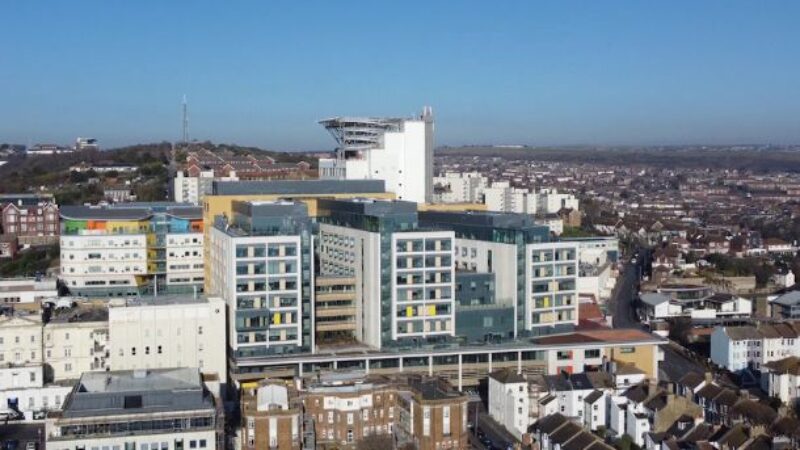
A journey of 50 steps and 195 years – a once in a generation leap for hospital care in Sussex
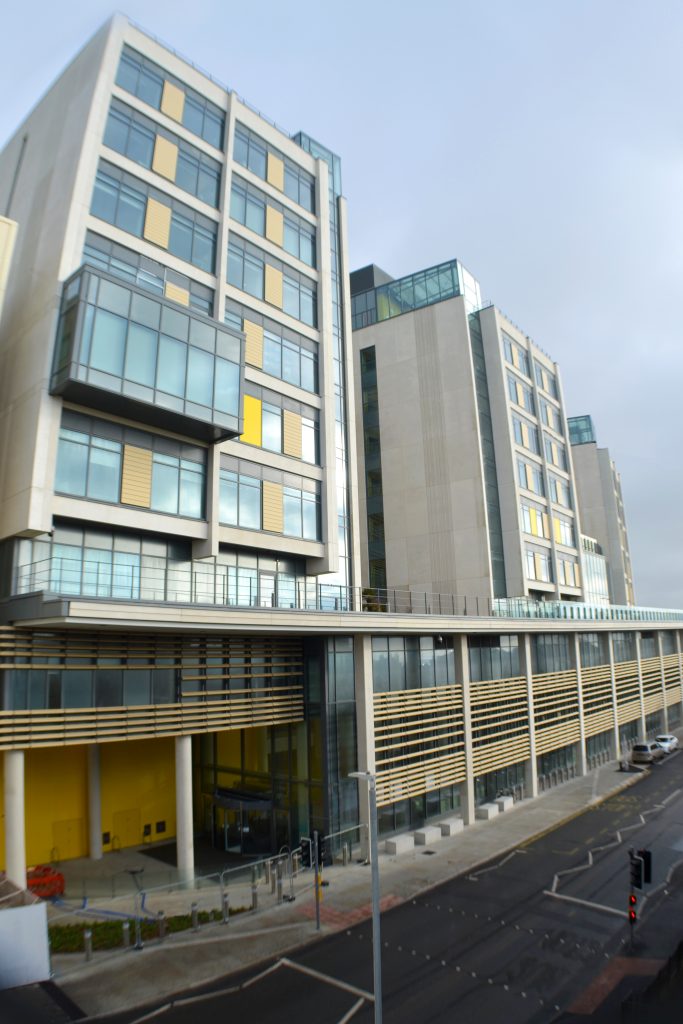
The first patients are being treated in the new Louisa Martindale Building at the Royal Sussex County Hospital in Brighton today (Monday 12 June 2023).
The historic milestone sees the newest clinical building in the NHS standing next to the oldest, the Barry Building – walking between the two buildings is a journey of 50 steps and 195 years.
Throughout the month of June, dozens of departments and wards will be taking this journey through history as they transfer from the old Victorian architecture to state-of-the-art, new facilities.
Following a meticulously planned schedule, those attending Outpatients appointments on the lower floors of the eleven-story Louisa Martindale Building are the first patients to be welcomed by staff.
Throughout June, more and more services will be moving in the into the modern, spacious new estate, culminating when Critical Care from the Thomas Kemp Tower moves across.
On Monday 3 July, the hospital’s new main entrance will open to all visitors, patients, and staff. The impressive glass-fronted Welcome Space will be used by one million people every year.
The chief executive of University Hospitals Sussex NHS Foundation Trust, Dr George Findlay, said: “An opportunity to improve healthcare on the scale of the Louisa Martindale Building comes along once in a generation, if you are lucky. It is a privilege to welcome patients into this new building with all the benefits it will bring to them, their visitors, and our staff.
“The opening of the Louisa Martindale Building is a testament to the thousands of people who have worked on it over the years. I would like to thank them all, from the team who started the design process 15 years ago, to my cleaning, estates and planning colleagues who have been working extraordinarily hard to make the building ready in recent months.
“Every single one of them can be proud of the part they have played, and I think their care and dedication will show through in the experience our patients will have in this amazing new building.”
A welcome space
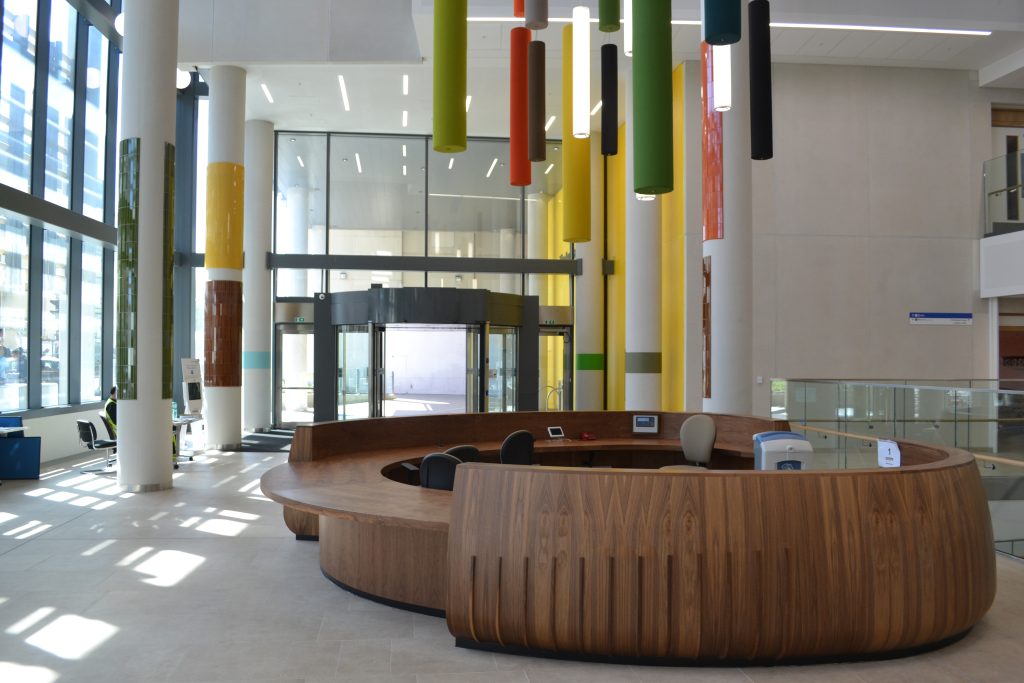
The new Welcome Space runs along the front of the Louis Martindale Building and will be the new main reception for the hospital, with links through to the rest of the Royal Sussex County Hospital.
The Welcome Space is served by new food and drink services, including WHSmith and M&S food, and has a large and comfortable waiting area with public toilets, infant feeding area and Changing Places room.
As well as self-check-in kiosks and live bus information, lifts and an internal stairwell connect it directly to 119 car parking spaces provided underground for the sole-use of patients and visitors.
Consultant rheumatologist, Dr Theresa Doherty, said: “This is such a change, the new building invites the community into the hospital. We’ve never had a space like this before.
“It makes a real difference for patients to know their loved ones can wait in comfort. Having space and ease of access for our patients will change their experience for the better in so many ways.”
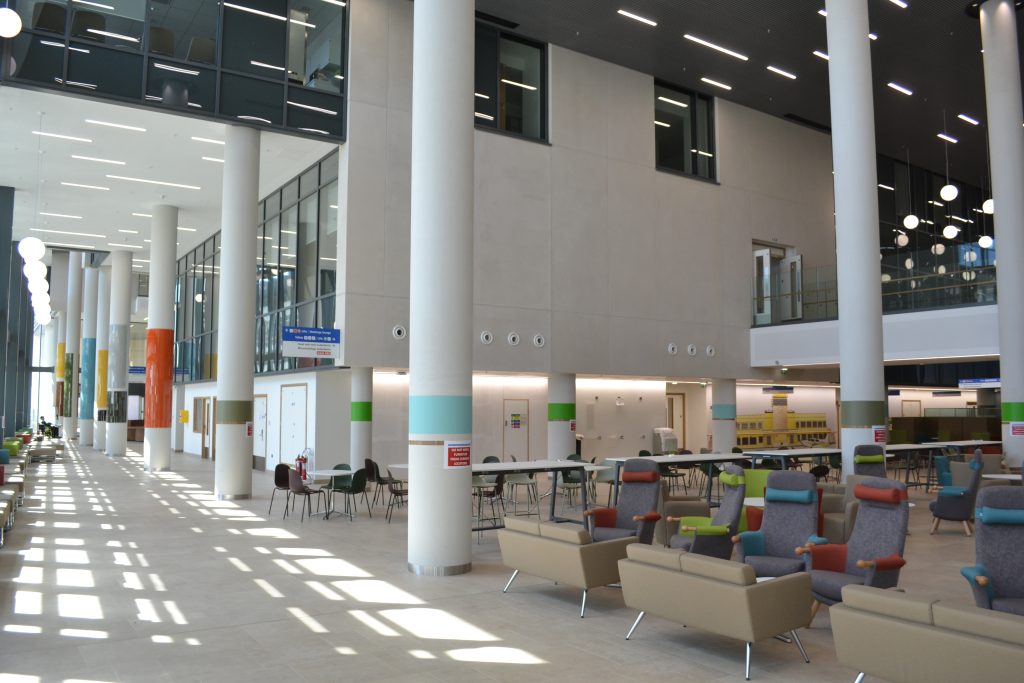
Outpatients
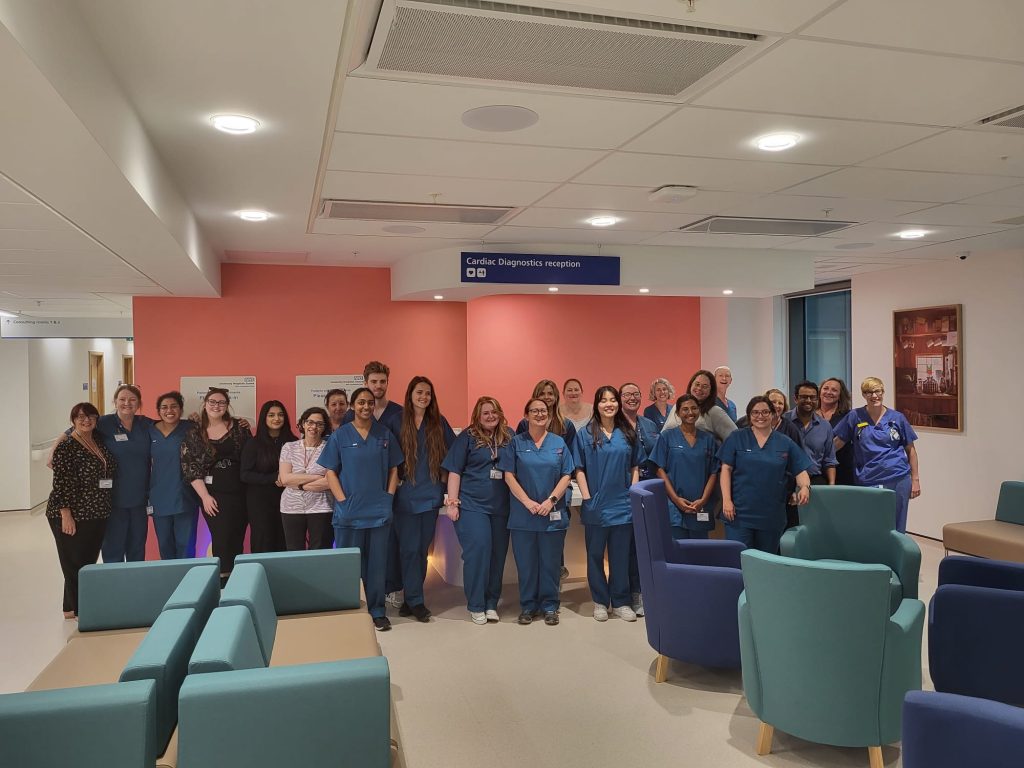
Outpatient services are provided on the lower floors of the Louisa Martindale Building, carefully coordinated with each other to improve patient experience, and make common journeys easier.
For example, the Fracture Clinic and Imaging Department are located next to each other on level 4, to make it as easy as possible for patients to access the X-ray services they may need.
All the Outpatients departments have welcoming reception and waiting areas, and each has been designed with purpose-built facilities to enhance patient privacy, confidentiality, and dignity.
Principal cardiac physiologist, Caroline New-Jackson, said: “The improvement in privacy and dignity for patients is outstanding.
“For instance, we now have pass-through changing facilities for each of our patients with a dedicated changing room that leads straight to their treatment room. Previously, patients had to go through corridors where other patients may be waiting to reach the treatment area.”
Outpatient services also have a new appointment alerting system. Patients carry a device that informs them where to go and when it is time for their appointment. This means they can visit the cafe or shop without worrying about missing their appointment.
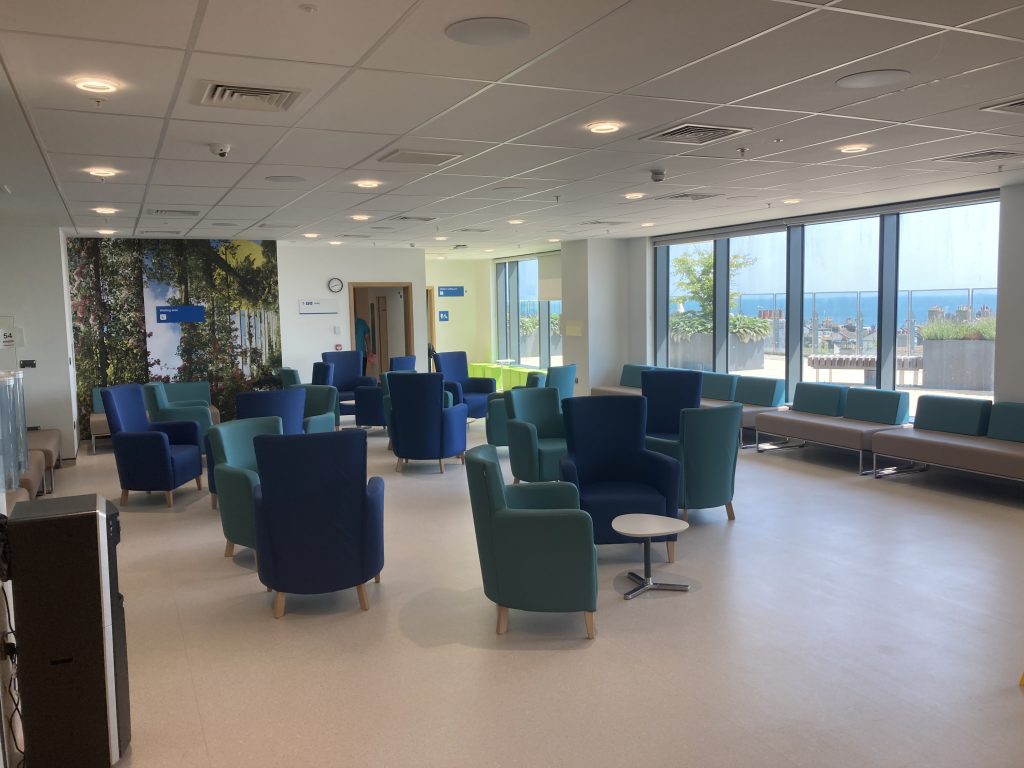
Equipment and technology
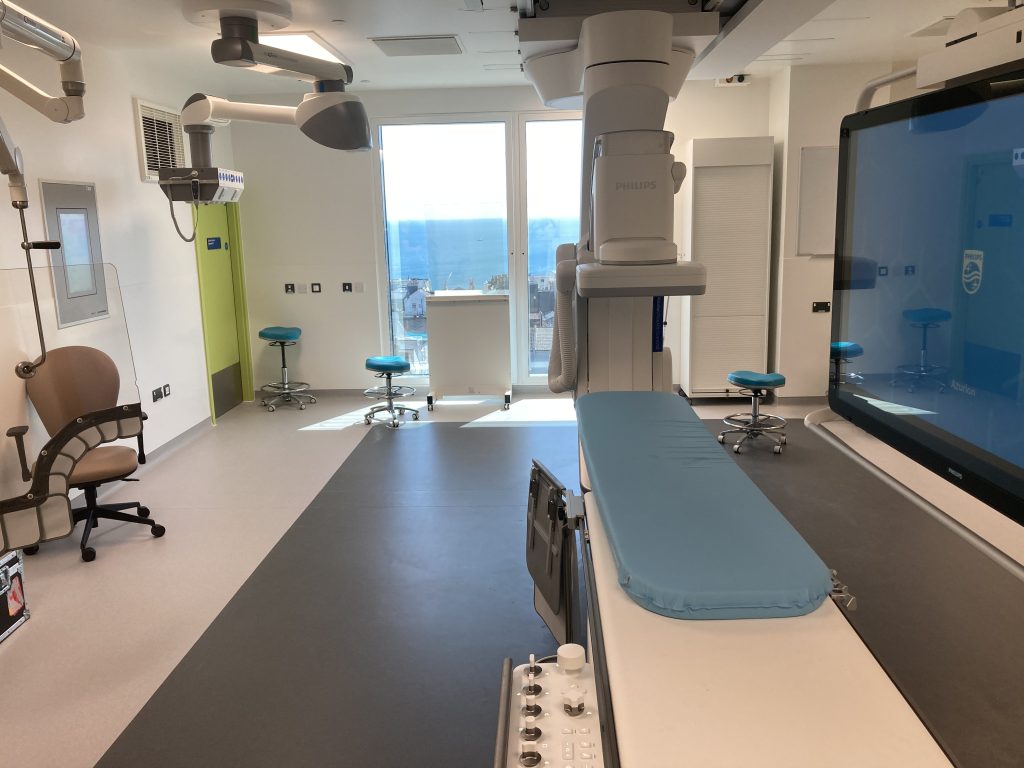
Millions of pounds worth of new medical equipment is ready to serve patients in the Louisa Martindale Building. This includes MRI and CT scanners, x-ray units and bi-planar scanners.
The Imaging Department on level 4 and the new theatre suite on level 5 has received the greatest amount of new equipment to improve diagnostic facilities while reducing exposure to radiation.
Lead superintendent in MRI, interventional radiology and neurosciences imaging, Simon Mackenzie, said: “Our new department helps us to help patients – the natural light, space and art in the department makes it seem less clinical and more welcoming.
“This helps reduce the anxiety some patients may feel, while the new equipment is state of the art and allows us to scan patients more accurately and more quickly. These are game changing improvements.”
The new theatre suite on level 5 is focused on neurosurgery and interventional radiology. The neurosurgery suite has an intraoperative MRI that will allow scans of complex brain operations during the procedure, leading to better outcomes for patients.
Wards
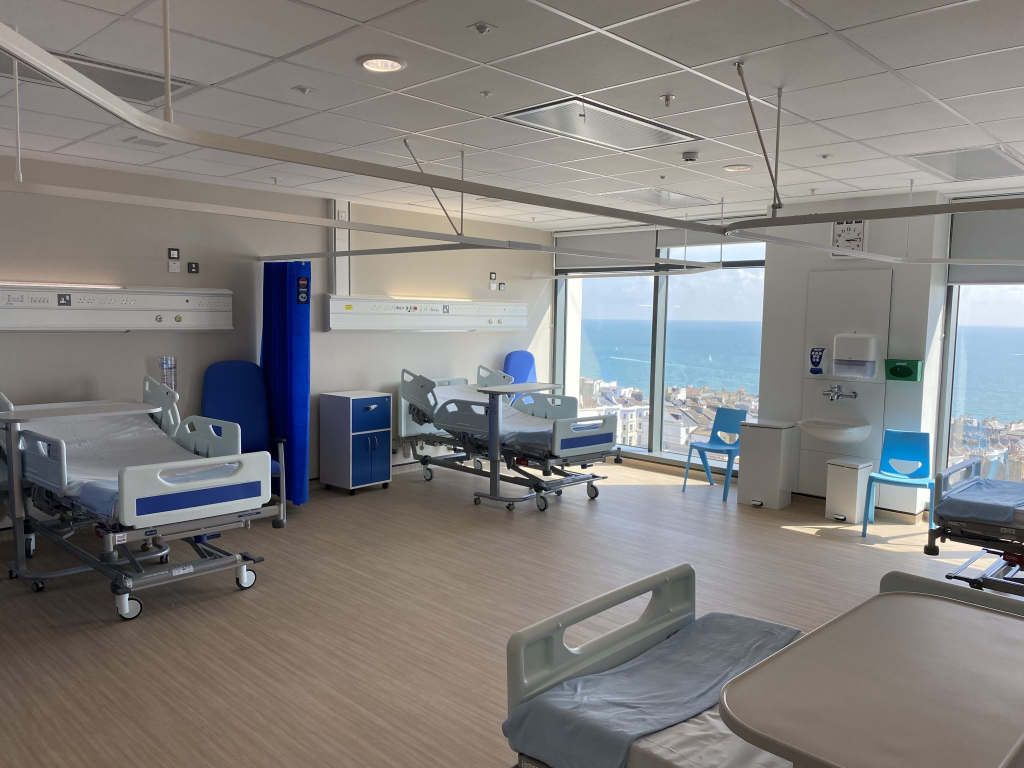
The wards are on levels 5 to 10 of the Louisa Martindale Building, with each providing stunning views from every patient’s room.
Two thirds of patient beds are in single ensuite rooms, with the remainder provided in single sex bays with a maximum of four patients each.
Every ward has a communal patient area where patients can socialise and take their meals, and they are designed to help staff spend more time with patients.
3Ts change consultant and nurse, Zingy Thetho, said: “Coming here and seeing what this provides, I’m quite emotional and excited as well. I’ve shown many clinical colleagues round the new building, and I can see the light in their faces – it is such a contrast and so positive, for everybody.”
There are treatment rooms on the wards. Patients will be able to receive some treatments on the wards that would previously have required them to go elsewhere in the hospital.
The wards have been designed to minimise the confusion for patients with dementia or similar conditions. Groups of single rooms have the same layout to reduce confusion if a patient has to change room or revisits the ward.
Colour palettes for the walls and floors are dementia friendly and low-level lighting at night is designed to reduce the sense of confusion when patients wake up.
All the single rooms have a continuous handrail from the bed to the bathroom to help patients who may be less steady on their feet and prevent them from falling.
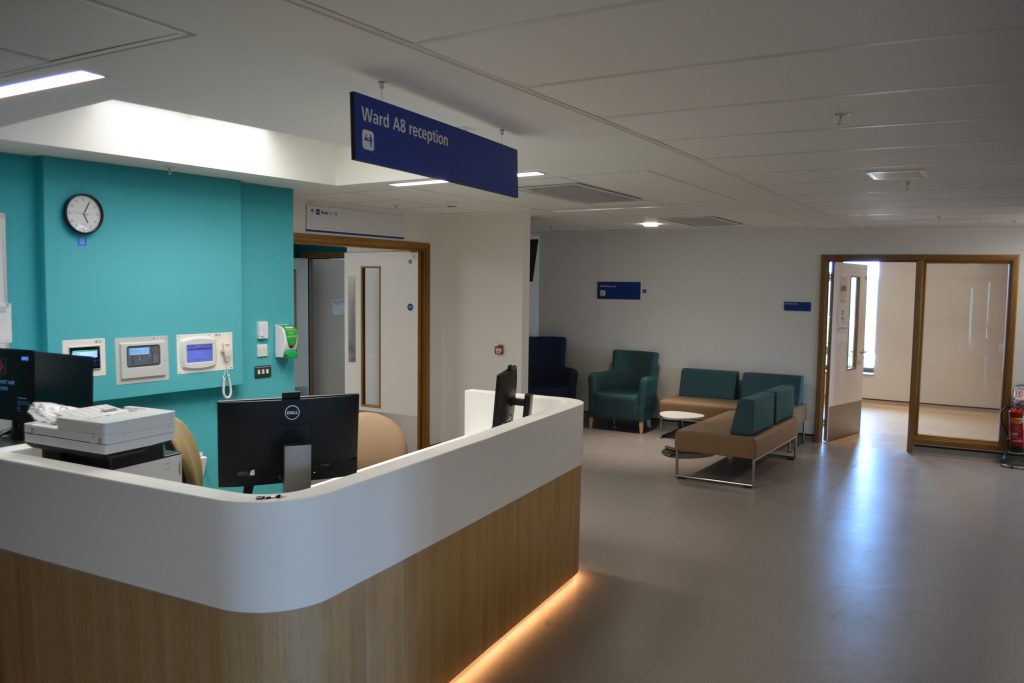
Bringing services together – from a Fiat to a Ferrari
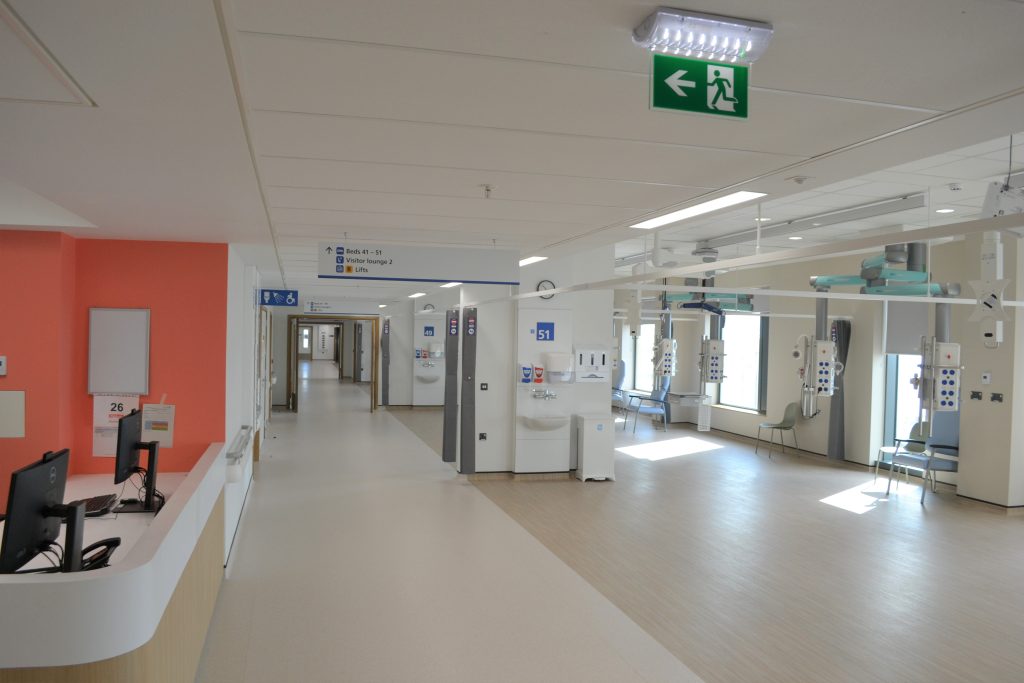
The design of the Louisa Martindale Building brings services together to provide better care for patients. This includes Head and Neck services, Neurosciences and Trauma, and Neurology and Stroke.
The Head and Neck Department sees the Ear Nose and Throat (ENT) teams, and parts of Audiology and Maxillo-facial services working together in the same area for the first time.
Head and Neck nurse manager, Charlotte Lee, said: “Bringing these services together will allow us to provide more of a one stop shop, offering more to patients in a single appointment.
“This, with the improved environment, will make such a difference for everyone who comes to the department.”
Head of Audiology, Manuel Loureiro, added: “In terms of equipment and the environment, we are going from a Fiat to a Ferrari overnight.
“There is no comparison between our current audiology booths that were manufactured in the 70’s and the new ones.
“Combine that with being able to coordinate patient care directly with colleagues and the difference for patients becomes staggering.”
Critical Care services will come together on level 7 from two different locations in the hospital. Critical Care matron, Lucy Pitt, said: “Our neuroscience and trauma patients will be in one area with amazing views and natural light which is a really good space for them.
“They will also be very near the CT scanner which is important for patients with these sorts of injuries and because they are together, our neurosurgeons and the trauma team will be able to work much more effectively.
“Our specialist skilled nurses and doctors will look after them and we will have a great space to start their rehabilitation and their first steps on the road to recovery.”
Level 10 of the Louisa Martindale Building has a large rehabilitation gym, courtyard, and specialist rooms for assessing patients’ abilities to cope at home. The Neurology Ward and Stroke Unit patients on this level both benefit from these services as they follow similar rehabilitation paths.
A beautiful built environment
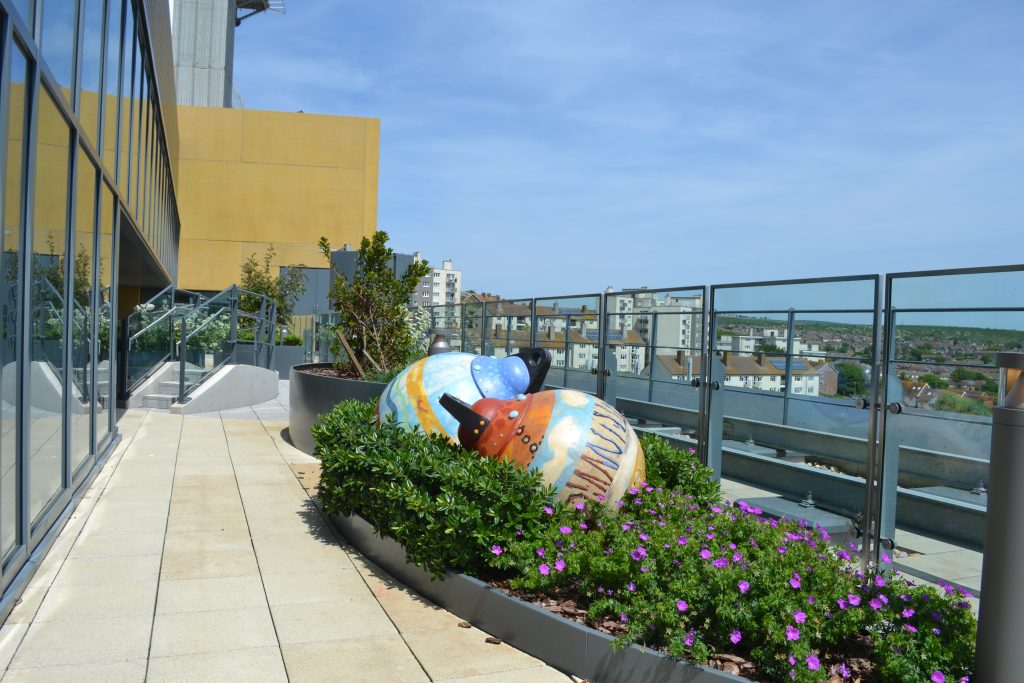
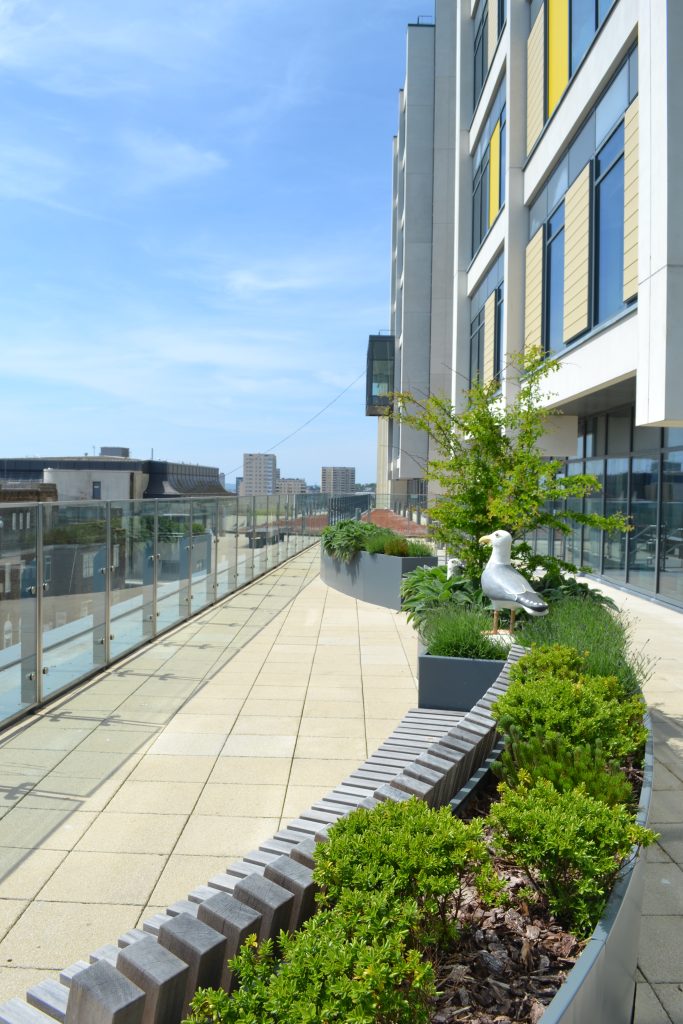
The Louisa Martindale Building is designed to improve patient experience at every level. Unique artwork and coordination of colour schemes helps the public find their way around the building.
Public areas, corridors and lifts are separated from inpatient transfer lifts and corridors to preserve patient privacy and dignity as they move from one service to another.
More than 1,500 plants and shrubs, 21 trees, 20 planters and 450m2 of sedum wild grass and flower areas breath new oxygen into the environment and improve wellbeing through nature.
Chief financial officer and executive lead for the hospital redevelopment programme, Karen Geoghegan, said: “We have built the Louisa Martindale Building with environmental best practice in mind at every stage, to ensure our new facilities care for the planet as well as our patients.
“The use of modern materials, employing new construction techniques and use of a comprehensive building management system, have all helped to minimise the environmental impact of the project.
“The end result is an amazing new asset for healthcare in Sussex that is both a beacon for beautiful public building design and a shining example of a new NHS hospital fit for the 21st Century.”